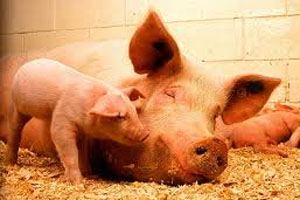New method to help reduce piglet mortality

To help increase the survival of newborn piglets, U.S. Department of Agriculture (USDA) scientists have developed a new method that predicts animals’ mortality and nursing ability.
Physiologist Jeffrey Vallet and his colleagues at the Agricultural Research Service (ARS) Roman L. Hruska U.S. Meat Animal Research Center (USMARC) in Clay Center, Neb., call the measuring technique the “immunocrit,” which determines whether preweaning piglets receive adequate colostrum from the sow. ARS is USDA’s principal intramural scientific research agency, and this research supports the USDA priority of promoting international food security.
Preweaning mortality costs the U.S. swine industry an estimated $1.6 billion each year, and one of the contributing factors is deficient colostrum intake by piglets. The colostrum produced by a sow after giving birth contains immunoglobulins, or antibodies, which help build immunity against bacteria, viruses and other foreign elements. Piglets that fail to nurse and receive enough colostrum from their mother within the first 24 hours after birth usually die.
The immunocrit measures newborn piglet serum immunoglobulin in blood samples. These measurements indicate piglets’ mortality and nursing ability, according to Vallet, research leader of USMARC’s Reproduction Unit. Immunocrit results also show that the average measurement of piglets in a litter reflects the sow’s ability to produce colostrum.
In addition, scientists have found a connection between immunocrit measurements, piglets’ weight and mortality. Pigs that weighed more were more likely to survive the challenge of not getting colostrum within the critical timeframe, as opposed to those that weighed less.
Because test results are obtained so quickly, it is possible to identify compromised piglets while they’re still alive, according to Vallet. The immunocrit recognizes piglets within a litter that have not eaten or had the chance to nurse. This provides an opportunity to save at-risk piglets by using intervention strategies.
The new technique, which also works with cattle, can be used by swine producers to test management practices such as split suckling, according to Vallet. A labor-intensive method, split suckling is designed to improve colostrum intake for piglets born last by giving them uninhibited access to the sow. Using the immunocrit, blood samples can be taken 24 hours after the split suckling procedure to determine if colostrum intake has increased in these piglets.
Source: USDA (Sandra Avant)







